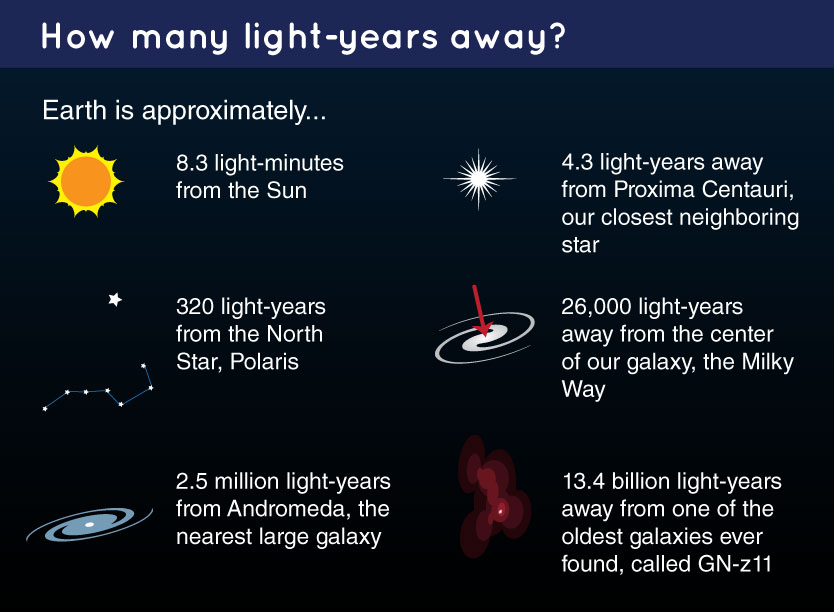Have you ever wondered how far away the stars and galaxies in space really are? We often hear about distances being measured in light-years, but what exactly does that mean?
So, what is a light-year? A light-year is the distance that light travels in one Earth year. To put this into perspective, one light-year is approximately 6 trillion miles or 9 trillion kilometers. That's a lot of zeros! When we measure the distance between objects in space, we use light-years as our unit of measurement because it allows us to comprehend just how far away these objects are.
But why do we use light-years instead of a more familiar unit of measurement like miles or kilometers? The answer lies in the fact that space is so vast that traditional units of measurement simply aren't practical. Light travels incredibly fast, at a speed of 186,000 miles (or 300,000 km) per second. However, objects in space are so far away from us that it takes a considerable amount of time for their light to reach us.
When we look up at the night sky and see the stars, we're actually looking back in time. The farther an object is from us, the farther back in time we see it. For example, the Sun is the closest star to us, at a distance of about 93 million miles. This means that the light we see from the Sun is actually 8.3 minutes old. When we look at the next closest star, it's about 4.3 light-years away. This means that the light we see from this star is actually 4.3 years old. As we look farther and farther out into space, we see objects that are even more distant, some even billions of light-years away.
The fact that we're seeing objects that are so far away means that we're looking back in time to a time when these objects were much younger. For example, when we look at the nearest large galaxy to us, Andromeda, we're actually seeing it as it was 2.5 million years ago. This is because Andromeda is 2.5 million light-years away from us. The universe is filled with billions of galaxies, each one farther away than the last. Some of these galaxies are so far away that we're seeing them as they were billions of years ago, not long after the big bang.
In 2016, NASA's Hubble Space Telescope looked at the farthest galaxy ever seen, called GN-z11. This galaxy is a whopping 13.4 billion light-years away from us. This means that the light we see from GN-z11 is actually 13.4 billion years old! This galaxy is one of the first galaxies ever formed in the universe, and studying it can help us understand what the early universe was like.
Tags:
Cosmology

